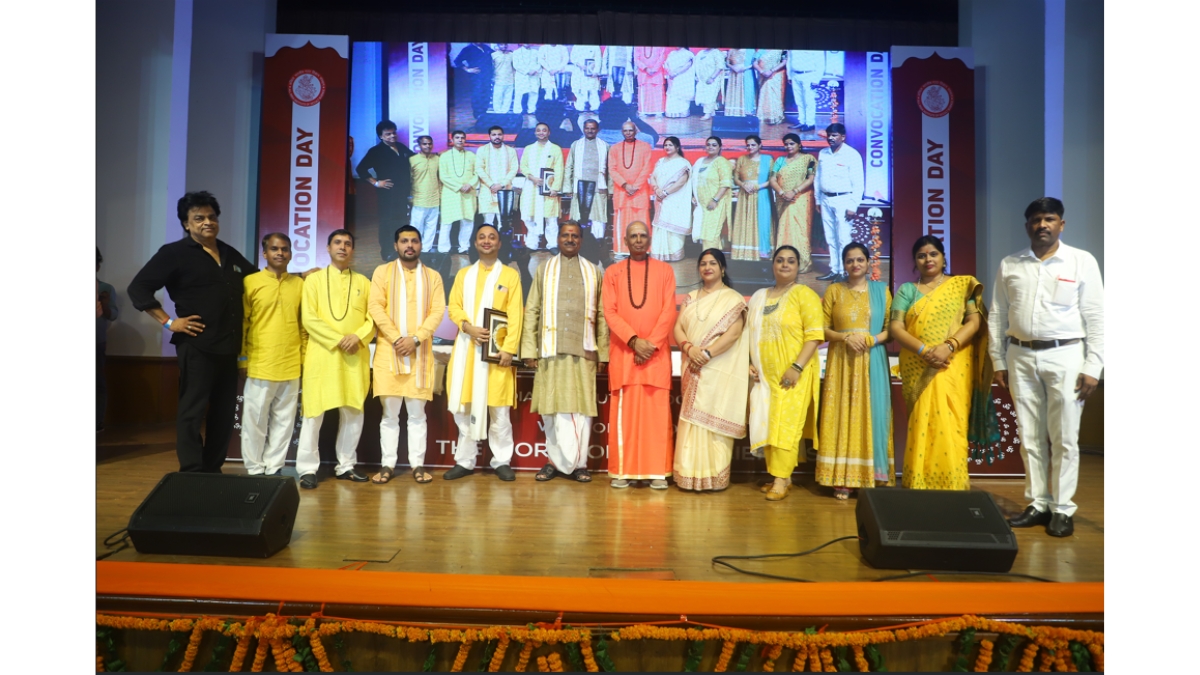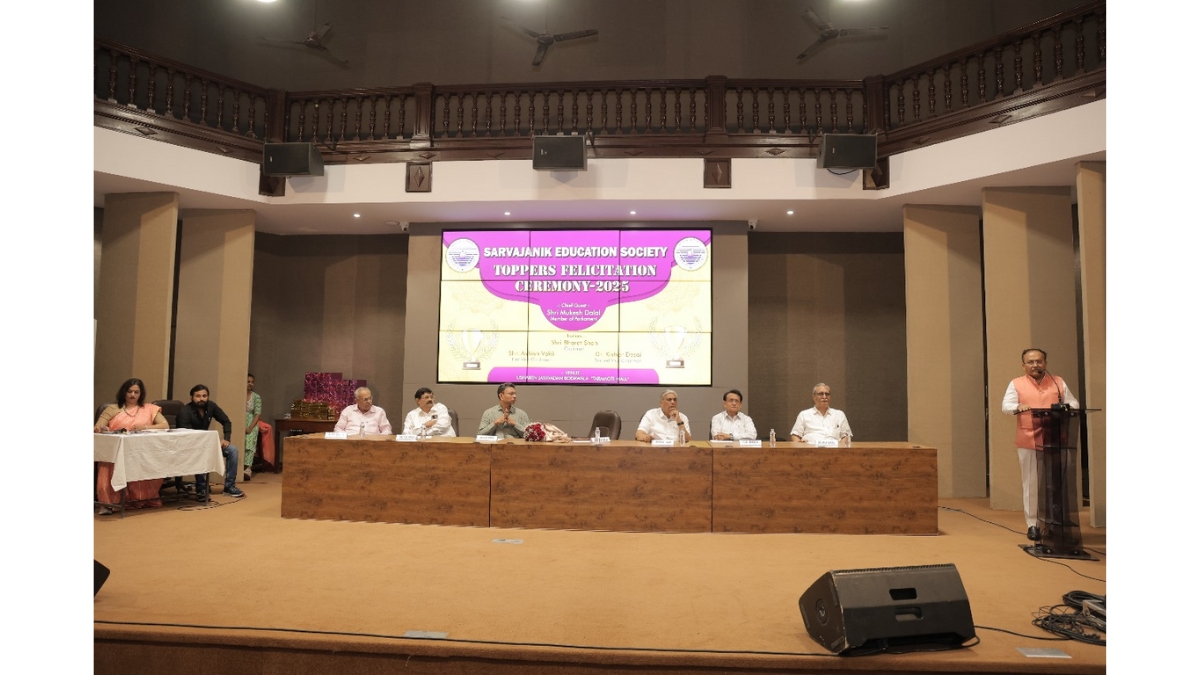Chief economic advisor against Universal Social Security for India. Why? He says

Chief Economic Advisor (CEA) V Anantha Nageswaran on Friday dismissed the idea of Universal Social Security, saying it will create a ground for “perverse incentives” for people and dissuade them from seeking income-generating opportunities. (ALSO READ: RBI forecasts GDP growth at 6.5%, retains April projection)
‘We may be creating the ground for perverse incentives’
He said the concept of Universal Social Security is not favourable for developing countries like India which need to focus on economic growth to take care of the aspirations of its people.
“For our country, when natural economic growth should take care of many of the aspirations, it (Universal Social Security) may not be necessary. We may be creating the ground for perverse incentives for people to not make their own effort in seeking such opportunities. So therefore, Universal Social Security for India is not something that should be on the agenda in the near term,” he said at an event here.
However, he said, support should be confined to those who may not be able to participate in economic activities and bring them up to a point where they can meaningfully engage in the economy.
India has not reached the stage where it is a moral or economic necessity to have Universal Social Security, he added.
ALSO READ | Towards universal social security: Priorities for G20
Former CEA mooted the idea of a uniform stipend
It is to be noted that former Chief Economic Advisor Arvind Subramanian during the first term of the Narendra Modi government had mooted the idea of a uniform stipend to citizens.
Subramanian in the Economic Survey 2016-17 had proposed the idea of universal basic income (UBI) or a uniform stipend to every adult and child, poor or rich.
The survey said UBI would guarantee all citizens enough income to cover their basic needs and would be easier to administer than the current anti-poverty schemes, which are plagued by waste, corruption and abuse.
‘We need 3-5 years of 10 per cent steady nominal GDP growth’
With regard to Fiscal Responsibility and Budget Management (FRBM), Nageswaran said, the overall goal of ensuring fiscal stainability has not gone away at all even though the mechanism for doing so might vary depending on the compulsions of the time.
So, he said, a 4.5 per cent gross fiscal deficit ratio is in place.
In the Budget speech, Finance Minister Niramala Sitharaman said the fiscal deficit in 2022-23 was estimated at 6.4 per cent of GDP, which was consistent with the broad path of fiscal consolidation announced by her to reach a fiscal deficit level below 4.5 per cent by 2025-26.
To achieve the target, Nageswaran said, “All we need to achieve is 3-5 years of 10 per cent steady nominal GDP growth and all these fiscal parameters will automatically improve because our growth rate is higher than the cost of borrowing.”
Nageswaran on public debt
India’s gross debt was at 81 per cent of GDP in 2005 which increased to 84 per cent now, he said, adding, only two other countries have done better than India — Indonesia and Germany with a 2 per cent slippage in the overall debt to GDP ratio.
“Many other countries in the G20 and beyond have seen a slippage in their debt ratio by an order of magnitude of 40 to 80 percentage points…we are at least held steady and we are a country which has a potential to grow in nominal terms between 10 and 11 per cent
“All that being said, I will also concede that we are at BBB minus. Even a country like the Philippines, which is much smaller than us has a BBB plus credit rating. And that means if you go from BBB minus to BBB plus your government’s cost of borrowing will come down by 100 basis points and that is a fiscal stimulus,” he said.
So, good fiscal health would translate into a good fiscal stimulus for citizens because interest rates will come down, he said.
“So we are aware of that and we are working towards it. Asset monetization and natural economic growth should help.
“There is no second opinion on the importance of keeping at it and achieving these numbers and getting to a better credit rating because it’s not just a question of prestige, it’s a question of actually putting more money in the hands of people through lower interest rates,” he said.
He also said improving macroeconomic parameters have raised the prestige of India at the global forum.
Sharing a personal experience, he said, his son, who was born in Singapore and currently studies in America made a statement that “nowadays even in the US, it is very cool to be an Indian. Modiji has made it very cool to be an Indian.”
CEA on artificial intelligence
Nageswaran also cautioned the IT industry to be prepared for the onslaught of Artificial Intelligence (AI) impacting their growth.
“Artificial Intelligence can take away the need for a lot of people. Indian software exporters. Therefore, we need to be cautious about whether AI will make a competitive threat to India’s IT-enabled services growth. So, we need to think ahead and plan ahead. AI make a competitive threat to India’s IT sector growth,” he said.
Talking about the resilient Indian economy, he said it is in a state of autopilot, bouncing back impressively after the pandemic and expected to grow in a range of 6.5-7 per cent in the current fiscal.
Sharing his optimism on the medium-term growth prospects of the Indian economy, he said that the sound macroeconomic policies of the government, structural reforms, such as GST, IBC etc, thrust on infrastructure and digitalisation, have ensured that the Indian economy can grow for a longer period without running into overheating problems.
CEA on investments, private consumption and inflation
On capex, he said that the private sector is poised to attain stronger investment growth following the strengthening of corporate balance sheets, and stronger bank balance sheets, which has improved their ability to lend and support from the government’s capex push.
Over the medium term, investments will remain a key driver of growth. The uptick in investments will drive the manufacturing output too, he said at the CII event here.
Private consumption, which contributes close to 60 per cent to GDP, has surpassed the pre-pandemic trend in the third quarter of last fiscal contributed by the release of pent-up demand and recovery in rural demand, he said.
Going ahead, he said, a lower inflation outlook due to easing commodity prices, good harvest and pass-through of lower input costs, will have a salutary impact on boosting the consumption spending further this fiscal.

Atul Tiwari is a seasoned journalist at Mumbai Times, specializing in city news, culture, and human-interest stories. With a knack for uncovering compelling narratives, Atul brings Mumbai’s vibrant spirit to life through his writing.





